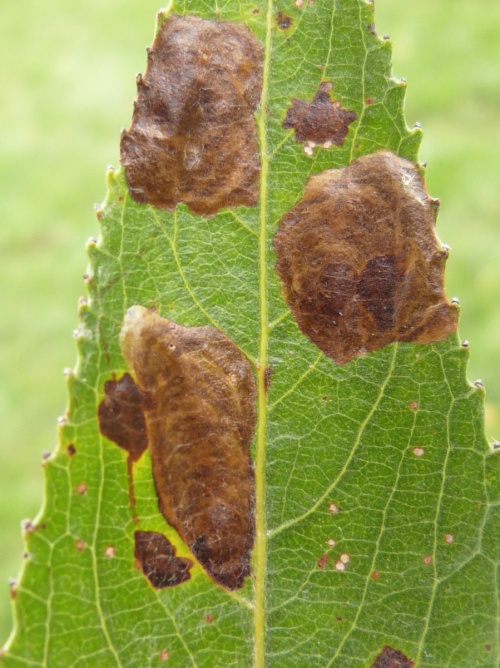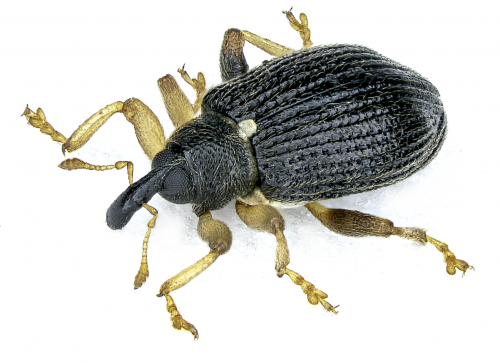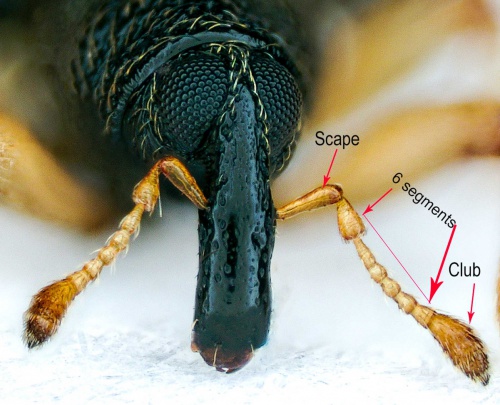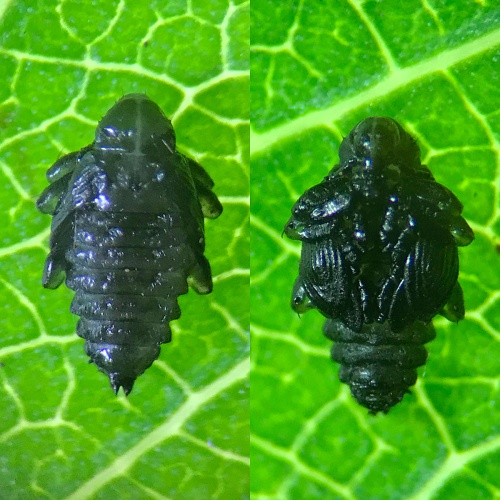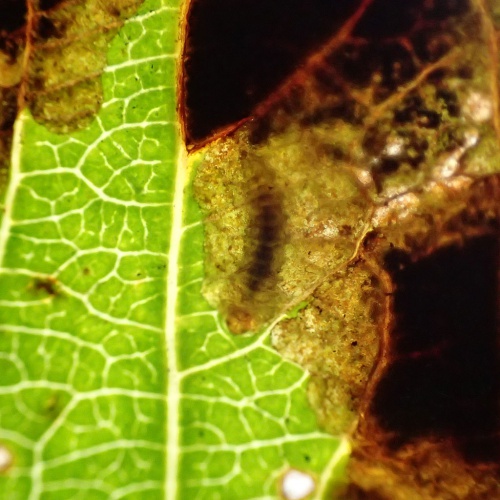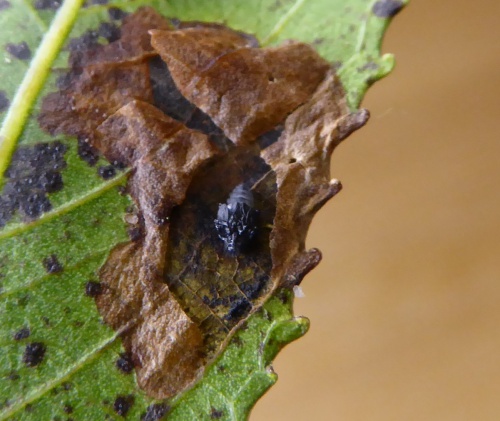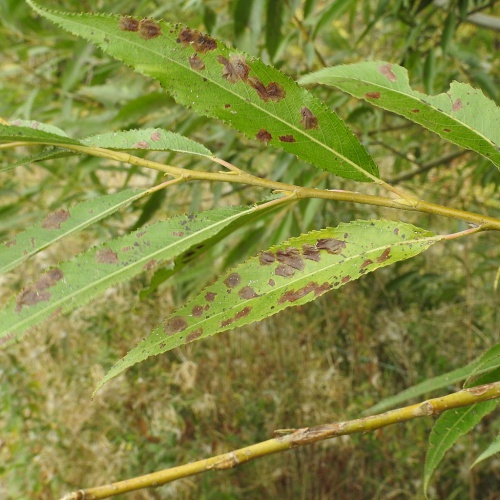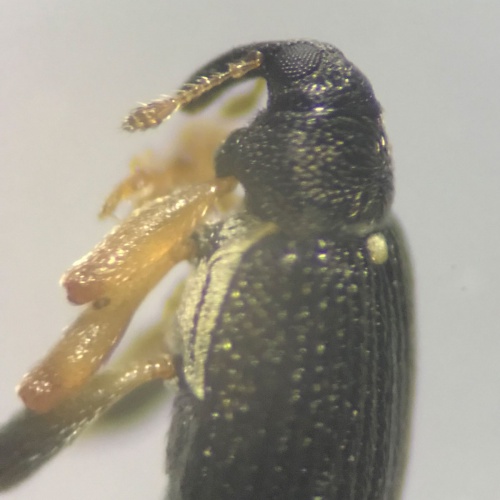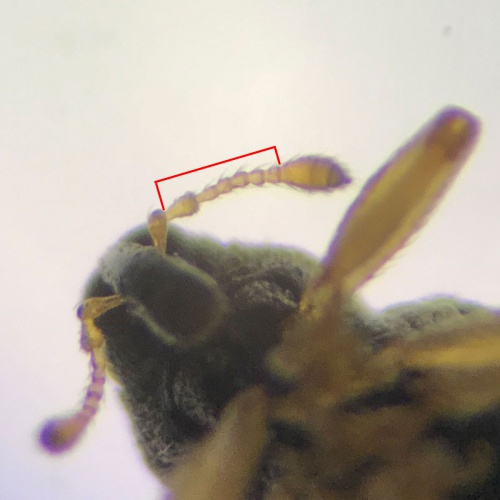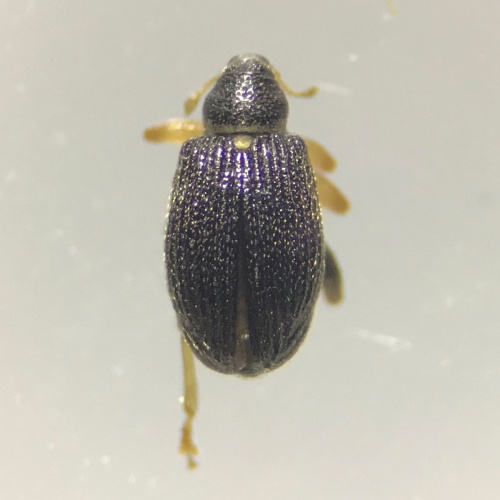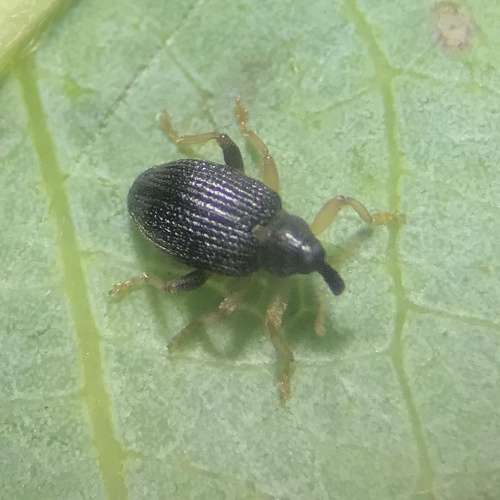Isochnus sequensi
A tiny (2.0-2.5mm) black weevil with a white scutellum, pale tarsi and tibiae and yellow/red fore and mid femora. The antennal funiculus is six-segmented.
The larvae feed on willow leaves, forming brown blotch mines.
Mines are indistinguishable from the very similar but rarer Isochnus foliorum. Adults must be collected or reared to confirm identification. I. foliorum has pitchy fore and mid femora and seven segments in the antennal funiculus.
To rear the adults a leaf or two containing mines should be collected and kept in a tupperware box with a little damp kitchen-towel wrapped around the stem to keep the leaf green. This should be kept in a cool dark place and checked every day for adults and wiped clean to avoid mold. The adults will usually emerge after several days. To differentiate between species :-
The front and mid femora of I. sequensi are red to yellow.
The front and mid femora of I. foliorum are black to pitchy.
Not identifiable from the mine. Adults must be collected/reared. Unless identified by a recognised expert, photographic evidence is required and the specimen should be examined with a microscope. In the comments box, state the key or ID method used. Note the beetle's size and describe the identifying characters. It is advisable to retain the specimen in case further checks are needed.
The larvae produce blotch mines in the leaves of Salix species, and sometimes Populus. The adults are usually found close by. The preferred species in Britain appears to be hybrid crack-willow, S. x fragilis.
Mines can be found when the hosts are in leaf.
The larvae feed within a blotch mine and then pupate within the mine.
The species had been considered local and scarce but is spreading and increasing from its strongholds in south-eastern England. It can be abundant where it occurs.
First found in VC55 in August 2014 when it was discovered at two separate locations on the same day.
Leicestershire & Rutland Map
Enter a town or village to see local records
MAP KEY:
Yellow squares = NBN records (all known data)
Coloured circles = NatureSpot records: 2020+ | 2015-2019 | pre-2015
UK Map
Species profile
- Species group:
- Beetles
- Kingdom:
- Animalia
- Order:
- Coleoptera
- Family:
- Curculionidae
- Records on NatureSpot:
- 12
- First record:
- 09/09/2018 (Gould, David)
- Last record:
- 09/10/2021 (Calow, Graham)
Total records by month
% of records within its species group
10km squares with records
The latest images and records displayed below include those awaiting verification checks so we cannot guarantee that every identification is correct. Once accepted, the record displays a green tick.
In the Latest Records section, click on the header to sort A-Z, and again to sort Z-A. Use the header boxes to filter the list.


